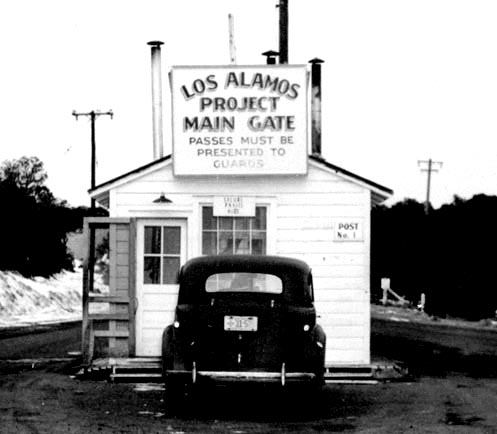Charles Brenton Fisk was a member of the Special Engineer Detachment and technician at Los Alamos. He later became world-renowned for his organ building company, C. B. Fisk Inc.
In February of 1943, Fisk’s uncle Joyce Stearns, an American physicist and future Director of the University of Chicago’s Metallurgical Laboratory (“Met Lab”), helped him get a job at the Met Lab.
As a lab helper and technician, Fisk interpreted schematic diagrams, soldered materials, and constructed electrical circuits. While he was aware that this was a military job, Fisk was not privy to the fact that he was contributing to the Manhattan Project’s atomic bomb construction.
Fisk was transferred to Los Alamos in July 1944. He was a part of Darol Froman’s group. One of his main jobs was to solder pre-amps, components within electronic sensors used for testing detonations. The sensors specifically were being used to detect the presence or absence of a spherical implosion.
While Fisk did not understand the necessity of the spherical implosion, it was actually an essential part of the plutonium bomb’s design. This new type of design would be employed in Fat Man, the bomb dropped on Nagasaki on August 9, 1945.
After the atomic bombings of Hiroshima and Nagasaki, Fisk realized the implications of what he had been working on at Los Alamos. In a letter sent to his parents on August 12, 1945, Fisk calculated his “share” of responsibility: ‘With only two bombs we have killed between 250,000 and 300,000 Japanese people. Divided evenly over the number of people on the project, each member is responsible for the death of four Japanese. I cannot count this as an honor.’
In the letter, he also remarked on his slight feeling of pride: “Despite all the foregoing, there has been introduced into our lives an element of pride, the pride that accompanies the success of a mission.” This tension between pride and guilt has commonly been linked to Fisk’s decision to leave the world of physics for organ building.
Early Years
Charles Brenton Fisk was born in Washington D.C. in 1925. He grew up in Cambridge, Massachusetts. From a young age, he was interested in music, electronics, and technology.
As a boy, he was a soprano in the Christ Church on Cambridge Common’s choir and sang under Choirmaster E. Power Biggs. Besides singing, Fisk also played the trumpet and organ. One of his childhood friends recalled that Fisk built his own amplifier when he was around fourteen or fifteen years old.
Later Years
Following World War II, Fisk studied physics at Harvard University. After graduating in 1949, he worked for Brookhaven National Laboratory as a researcher of cosmic rays. A year later, he departed for Stanford University, where he planned to work toward a Ph.D. in physics.
Fisk, however, only completed one semester of his studies at Stanford. Instead of finishing his degree, he decided to return to his love of music. It has been previously noted that Fisk said he turned to organ building for ‘spiritual’ reasons.
He began his organ building career by apprenticing with John Swinford in Redwood City, California. Afterward, he moved to Cleaveland, Ohio and apprenticed with Walter Holtkamp, Sr., one of the most avant-garde American organ builders in the 1950s.
Following his apprenticeships, Fisk became a partner and later the owner of Andover Organ Company. In 1961, he founded C. B. Fisk Inc. in Cape Ann, Massachusetts near his childhood summer home. He envisioned the company would become a workshop to teach co-workers about the music, art, engineering, and cabinet making involved in organ building.
Fisk became one of the first modern American organ builders to adopt the tracker key and stop action mechanisms of historical European and American instruments. In doing so, he strayed from the electro-pneumatic action mechanism commonplace in the early twentieth century.
On two separate occasions, Fisk constructed the largest four-manual mechanical action instrument of twentieth century America. The first was at Harvard University in 1967 and the second was at the House of Hope Church in St. Paul, Minnesota in 1979.
In 1983, Charles B. Fisk died of an autoimmune disease.
Even after Fisk’s death, C. B. Fisk Inc. has continued to construct organs for numerous universities, churches, and organizations in the United States and around the world. In 2003, the company built a five-manual organ for a cathedral in Lausanne, Switzerland, which made it the first American organ to be made for a European cathedral.
For more information about Charles B. Fisk, please see the following references and sources:





